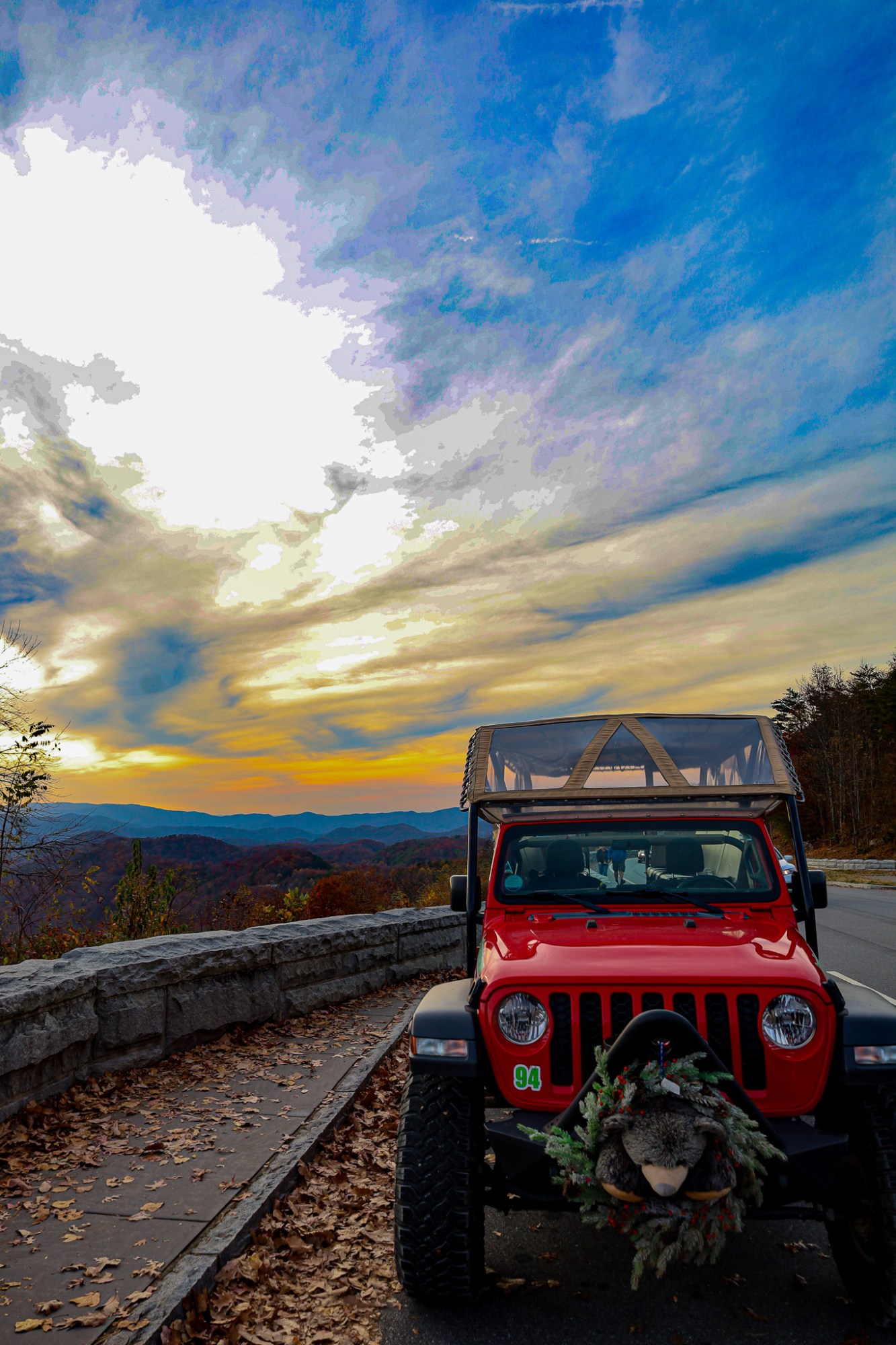THE FOOTHILLS PARKWAY IS A SCENIC JOURNEY THROUGH THE GREAT SMOKY MOUNTAINS

Placed within the iconic expanse of the Great Smoky Mountains National Park lies a less-traveled road that offers some of the most breathtaking vistas in the Eastern United States. The Foothills Parkway, a scenic drive designed to skirt the park’s northern and southern fringes, provides a unique perspective of the Smokies’ majestic beauty. Though not as well-known as some of the park’s other attractions, this roadway is a hidden gem that beckons travelers seeking a serene and picturesque journey through the heart of Appalachia. Let’s embark on a virtual tour of the Foothills Parkway, exploring its history, highlights, and the incomparable experiences it offers.
 A Road Long in the Making
A Road Long in the Making
The story of the Foothills Parkway begins in 1944, when Congress authorized its construction to provide a scenic link between the Great Smoky Mountains and the Cherokee National Forest. Envisioned as a 72-mile drive, the Parkway was intended to offer panoramic views of the mountains and valleys without cutting directly through the rugged terrain of the national park. However, due to environmental, financial, and engineering challenges, the project progressed in fits and starts over the decades. Today, several completed segments of the Parkway are open to the public, each offering its own unique vistas and experiences.
Exploring the Segments
The Foothills Parkway is currently accessible in two main segments: the western section, which stretches from Chilhowee to Wears Valley, and the eastern section, extending from Cosby to I-40. Each segment offers a distinct journey through the Smoky Mountains’ diverse landscapes.
The Western Section: Chilhowee to Wears Valley
The western section of the Foothills Parkway spans approximately 33 miles, offering awe-inspiring views of the Tennessee Valley, the Chilhowee Lake, and the distant peaks of the Great Smoky Mountains. One of the highlights of this stretch is the “Missing Link,” a recently completed 1.65-mile section that includes a series of bridges and viaducts, engineering marvels that gracefully navigate the mountainous terrain. Travelers along this route are treated to numerous pull-offs and overlooks, each presenting an opportunity to marvel at the natural beauty, take photographs, or simply breathe in the fresh mountain air. The journey culminates at the Wears Valley entrance, providing a gateway to further exploration in the Smokies.
The Eastern Section: Cosby to I-40
The eastern segment, though shorter, offers a tranquil 6-mile drive that winds through lush forests and past rolling hills. This section is particularly beloved for its springtime display of wildflowers and vibrant fall foliage. Overlooks along the way provide views of the Cosby and Pigeon River valleys, with the majestic mountains serving as a stunning backdrop. The eastern section’s proximity to Cosby makes it a convenient starting point for visitors staying in or exploring the northeastern part of the park.
Experiencing the Foothills Parkway
Driving the Foothills Parkway is an experience that engages all the senses. The route is designed for leisurely travel, encouraging visitors to take their time, stop frequently, and immerse themselves in the splendor of the Smokies. Whether bathed in the golden light of sunrise, shrouded in the mystical fog that gives the Smokies their name, or aglow with the fiery colors of sunset, the Parkway presents a constantly changing canvas of natural beauty.
 Photography and Nature Observation
Photography and Nature Observation
For photography enthusiasts, the Foothills Parkway is a dream come true. The varying elevations and unobstructed vistas offer endless opportunities to capture the essence of the Smoky Mountains. Nature observation is another rewarding activity, with the chance to spot wildlife such as deer, black bears, and a variety of bird species, as well as to identify numerous plants and trees native to the Appalachian region.
Hiking and Outdoor Recreation
While the Foothills Parkway itself is primarily a driving route, several trails and recreational areas are accessible from the Parkway, offering chances for hiking, picnicking, and further exploration. The Look Rock Tower trail, a short hike leading to an observation tower on the western section, is a must-do for panoramic views that stretch for miles.
Connecting with History and Culture
The Foothills Parkway also serves as a conduit to the rich history and culture of the Appalachian region. Along the route, interpretive signs provide insights into the area’s geological features, historical significance, and the people who have called these mountains home. The journey is not just through physical space but through time, offering a deeper appreciation for the natural and cultural heritage of the Smokies.
A Drive for All Seasons
Each season brings its own magic to the Foothills Parkway. Spring welcomes a burst of wildflowers, summer offers lush greenery and vibrant sunsets, fall dazzles with its spectacular foliage, and winter reveals stark, stunning landscapes often dusted with snow. This year-round accessibility ensures that every visit can offer a new perspective and a fresh experience.
Preserving the Parkway’s Legacy
As travelers enjoy the beauty of the Foothills Parkway, it’s essential to remember the importance of preserving this pristine environment for future generations. The National Park Service’s efforts to protect and maintain the Parkway allow visitors to experience the unspoiled beauty of the Smokies in a responsible and sustainable manner.
The Foothills Parkway is more than just a road; it’s a journey through the heart of the Great Smoky Mountains, offering awe-inspiring vistas, opportunities for reflection and recreation, and a deeper connection to the natural world. For those who venture onto this scenic byway, the experience is a reminder of the enduring allure of America’s most visited national park and the timeless beauty that awaits in the Smokies. Whether you’re an avid photographer, a nature lover, or simply seeking a peaceful escape, the Foothills Parkway promises an unforgettable journey through one of the most beautiful landscapes the East Coast has to offer.
